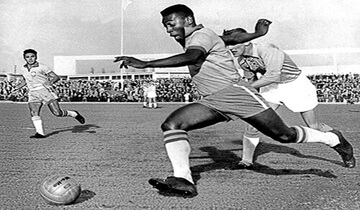Brief definition of salary arbitration in MLB
Salary arbitration is the process that determines player salaries for those with between 3-6 years of service time in MLB. It is a unique system not seen in other major American sports leagues.
Overview of the unique arbitration process for determining player salaries
Unlike free agency, players going through arbitration do not have complete control over negotiating salaries. Instead, salaries are determined through a hearing with an independent arbiter.
How Arbitration Works in Baseball
The “win-or-lose” format creates interesting salary dynamics. Teams try to avoid arbitration by agreeing to contracts to avoid the risk of “losing” a case. For players, arbitration provides an opportunity to earn salaries closer to market value.
The arbitration process has led to record-setting salaries
In 2022, Juan Soto set a new record with a $23 million 1-year contract for an arbitration-eligible player. Mookie Betts broke a record with a $27 million multi-year extension.
Key Dates for Salary Arbitration in MLB
Important dates include mid-January salary exchange, February hearings, and contracts finalized prior to Opening Day. Over 90% of cases settle before a hearing.
The Unique Nature of MLB Salary Arbitration
Arbitration is a product of MLB’s labor relations history. Eligibility starts earlier than other sports but leaves players one year shy of free agency, suppressing salaries. The process will likely remain a core component of baseball’s economic structure.
Salary Arbitration in Major League Baseball: A Brief History
Salary arbitration has become an integral part of the economics and labor relations in Major League Baseball. It provides a process for determining player salaries when players and teams cannot agree on a contract. While arbitration is commonly used in baseball today, it has its roots in early battles over free agency and owner control in the sport.
History and Origins
Salary arbitration was first introduced in the 1973 collective bargaining agreement between Major League Baseball and the Major League Baseball Players Association. It applied only to players with two or more years of MLB service time. For players without the leverage of free agency, arbitration provided an alternative route to negotiate salaries rather than holding out from playing.
Owners saw the process as a way to control salaries in the years before a player was eligible for free agency. The player and team would present their salary proposals to an independent arbiter, who would then choose one number or the other. This was seen as preferable to a holdout or letting a third party set the salary.
MLBPA Accepts Arbitration as Compromise
The MLBPA accepted arbitration as a compromise, although they fought to limit its scope. Over time, the process has been expanded through collective bargaining. Today, most players with between 3-6 years of service are eligible for arbitration andhave used the process to earn substantial raises.
Evolution into an Integral Part of Baseball Economics
While arbitration was originally imposed by owners, it has evolved to give players a powerful tool to increase earnings long before free agency eligibility. It has become an integral part of the economic structure of baseball. The introduction of salary arbitration in 1973 set the stage for how salaries are determined and labor relations are handled in the sport today.
The Path to Salary Arbitration in Major League Baseball
Eligibility Rules
- Now 3+ years service time (changed in 1985 CBA)
- Super Two status for top 22% of 2-3 year players
- Remains in effect until 6 years service time
The Arbitration Process
The arbitration process relies on salary comparisons between players of similar service time and performance. Both the player and team submit a proposed salary figure for the upcoming season. The arbitrator then chooses either the player’s proposal or the team’s figure as the binding one-year contract. There is no middle ground or averaging between the proposals.
Importance of Arbitration
Arbitration eligibility and the Super Two rule have been important factors in enabling rising young stars to increase their earnings earlier in their careers. However, teams often attempt to avoid the arbitration process through multi-year contract extensions for their top young players.
History and Future
The arbitration system has been in place in its current form since the 1985 CBA and is likely to remain a key part of the MLB economic system for the foreseeable future. It provides an intermediary step in the compensation structure between pre-arbitration salaries and free agent earnings.
The Arbitration Process in Major League Baseball
One of the key parts of the business side of baseball is the salary arbitration process. This system is used to determine the salaries for players with between 3-6 years of MLB service time who are not yet eligible for free agency. Here is an overview of how arbitration works in baseball:
The Process
- In mid-January, eligible players and their teams exchange proposed salary figures for the upcoming season. This starts the negotiation period.
- The two sides have until a deadline in mid-February to try to work out a contract agreement. Otherwise, the case goes to a hearing with a panel of arbitrators.
- At a hearing, each side has one hour to present evidence and arguments supporting their salary proposal. They emphasize comparable contracts of similar players as evidence.
- The arbitration panel must choose either the player’s proposed salary or the team’s figure. There is no middle ground or averaging.
- A decision is made within 24 hours of the hearing. This salary is then binding for the next season.
Key Dates
- January 15th: Salary figures exchanged
- February 15th: Arbitration hearings begin
- February 21st: Hearings end, salary decisions made
The arbitration system was created to provide a fair process to determine salaries without strikes or holdouts. While contentious at times, it has worked well in MLB for over four decades. Most cases ultimately get settled before reaching a hearing. When they do go to arbitration, each side makes their best case for what they see as a fair salary for that player.
The Influence of Arbitration on MLB Player Salaries and Rosters
Arbitration Leads to Big Salary Increases
Arbitration has become an integral part of the MLB salary structure and roster construction strategy for teams. The arbitration process allows certain players with 3-6 years of service time to have an independent arbitrator determine their salary for the upcoming season. This has led to major impacts across the league.
One of the biggest effects of arbitration is that it leads to significantly higher salaries for players going through the process. Pre-arbitration players have little leverage, and usually make close to the league minimum. But arbitration-eligible players see major raises, often earning several times their previous salary. In 2022, the average arbitrated salary was over $10 million, compared to an average salary around $600,000 for 0-3 year players.
Influences Team Payroll and Roster Decisions
The dramatic salary bumps can influence how teams budget their payroll and construct their rosters. Teams have to factor in rising arbitration salaries as they look to extend their contending window. This means making tough decisions on which arbitration-eligible players to commit to, and which ones to potentially trade or non-tender due to cost considerations.
Provides Leverage in Contract Negotiations
Additionally, the prospect of a large guaranteed raise in arbitration impacts negotiations between players and teams. Teams often try to sign players to contract extensions in the pre-arb years to gain cost certainty going forward. Players now have the leverage of knowing they can get a big arbitration payday if no extension is reached.
The arbitration system has helped funnel significantly more money to young and mid-career MLB players. But it has also led to difficult roster decisions for teams trying to balance rising salaries with staying competitive. Key players have been traded away by small market clubs in salary dump moves. Overall, arbitration has given players more power and forced teams to strategize around growing arbitration salaries.
Conclusion
In conclusion, salary arbitration has become an integral part of the economic structure of Major League Baseball. The process provides players with 3-6 years of service time the opportunity to have an independent arbitrator determine their salary, leading to significant raises. Arbitration has given players more leverage in contract negotiations and enabled rising young stars to increase their earnings. However, the prospect of rapidly increasing arbitration salaries also influences how teams budget their payroll and construct their rosters. While the “win-or-lose” format creates challenging dynamics, salary arbitration has overall been successful in funneling more money to mid-career MLB players. After four decades, it remains a core component of baseball’s labor relations and will continue shaping roster decisions and contract negotiations going forward.







































